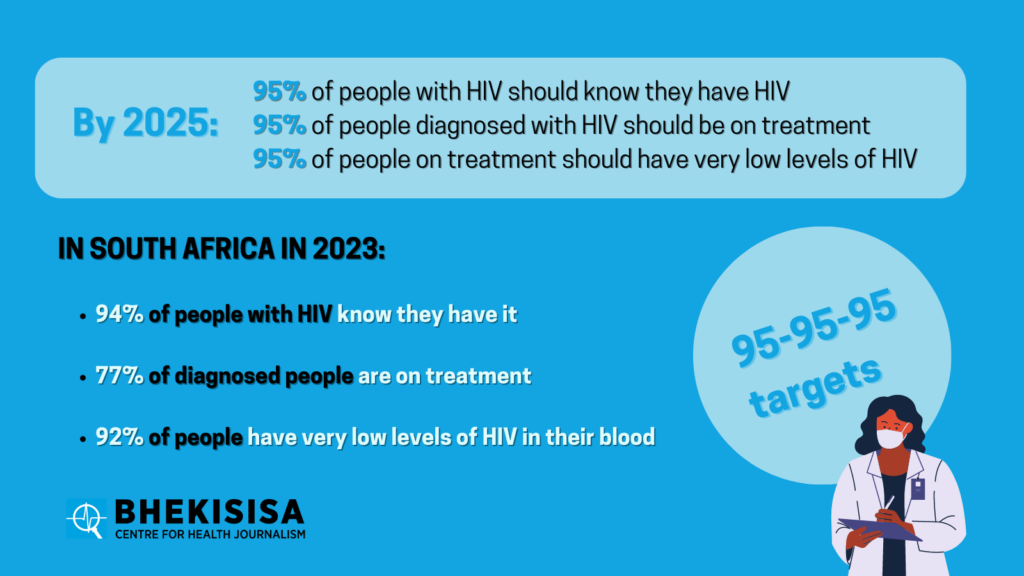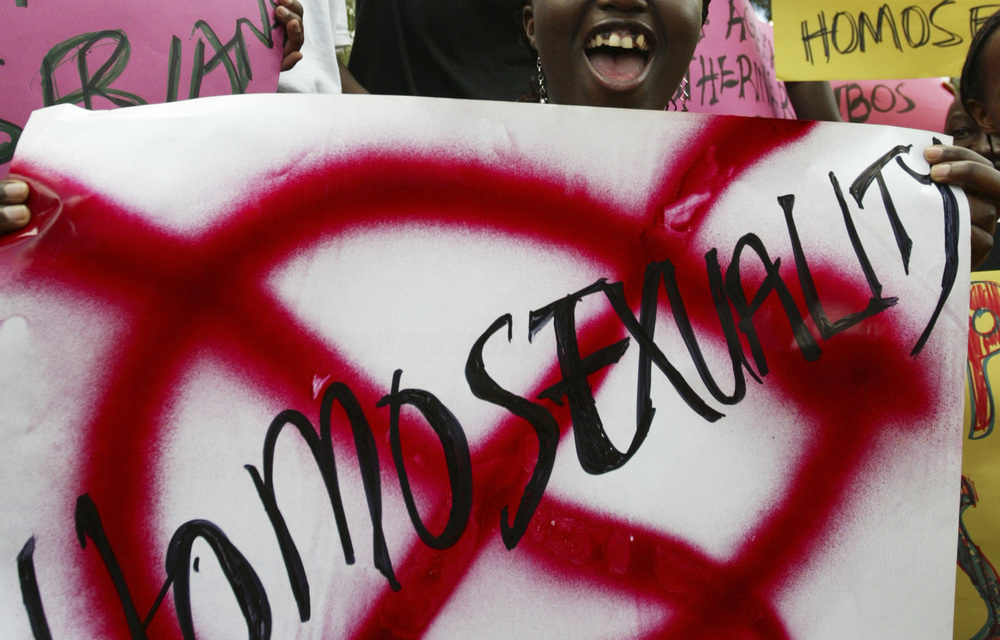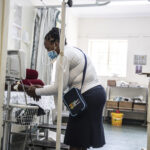- The United Nations Programme on HIV and Aids, UNAids, has released its latest HIV figures. Fewer people got infected with HIV in 2022 than in any year since the late 1980s, but Aids still killed someone every minute. Our Mia Malan and Lillian Roberts break it down in this Twitter thread.
- Read the UNAids report here. Want to read a short version? Here’s the executive summary. Watch the press conference, read the factsheet or powerpoint presentation.
- Want to know more about HIV? Have a look at our HIV reporting over the past decade.
- One of the biggest reasons HIV still spreads, is because governments haven’t implemented effective policies to address inequality. Want to know more? Read our Mia Malan’s op-ed.
How many countries did the 2023 UNAids global Aids update survey?
- The report looked at the estimated HIV figures of 172 countries, so 88% of countries (the world has 195 countries).
- The data collected for the report is 2022 data.
- 650+ members of country teams were trained to use estimates to spot inequalities and the stigma or policies that drive inequalities.
What were the report’s main findings?
How many of the world’s people have HIV?
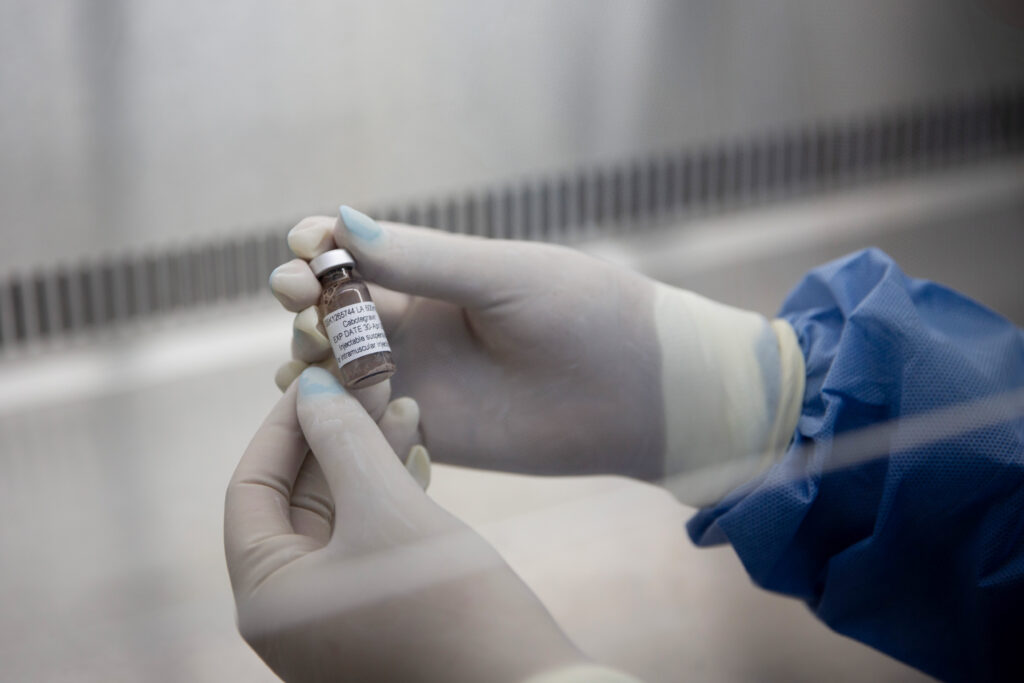
- In 2022, 39-million people around the world were living with HIV.
- Most people with HIV are adults (96% or 37.5-million). Adults are people who are 15 years or older.
- Children comprise 3.8% (1.5-million) of HIV-positive people. Children are people younger than 15 years.
Are HIV infections slowing down?
- Yes. In 2022, fewer people got infected with HIV than in any year since the late 1980s, but Aids still killed someone every minute in 2022.
- Between 1995 (in that year new infections peaked) and 2022, new HIV infections lowered by 59%: In 2022, 1.3-million people were infected with HIV, compared to 3.2-million people in 1995.
- Between 2010 and 2022, new infections decreased from 2.1-million in 2010 to 1.3 million in 2022. This comes to a decline of 38%.
- In the case of children (people younger than 15 years), new infections slowed down by 58% between 2010 and 2022 (from 310 000 to 130 000).
Which groups of people have a higher chance to contract HIV?
- UNAids says there are five groups of people, called key populations, who have a higher chance to get HIV than the general population. 0.7% of the world’s general adult population (people between 15 and 49) is infected with HIV.
- In 2022, gay men and other men who have sex with men had an infection rate 11 times higher than the general adult population. Sex workers had an infection rate four times higher, injecting drug users seven times higher and transgender people 14 times higher.
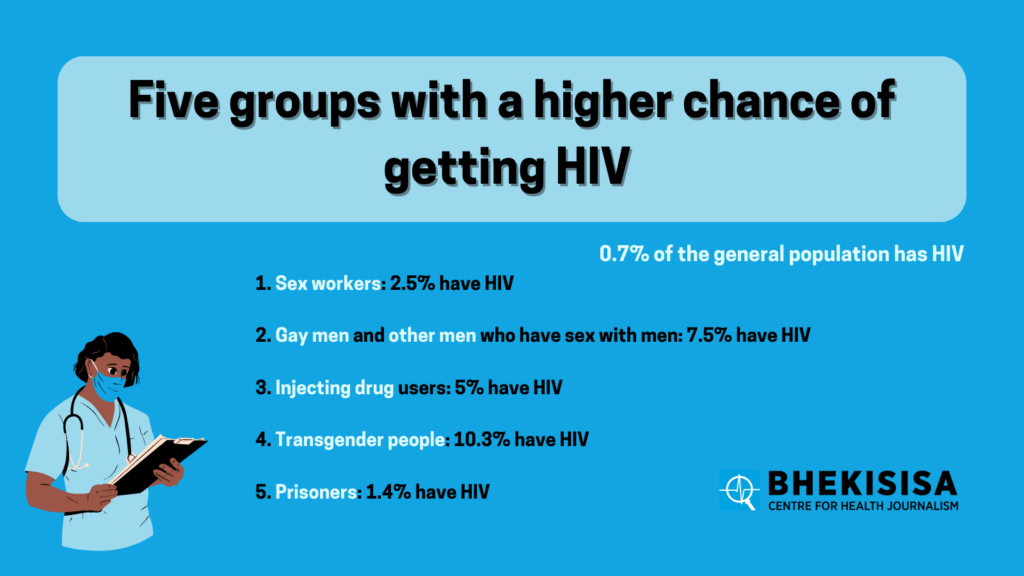
- Teen girls and young women (females between the ages of 15 and 24), particular in sub-Saharan Africa, also contract HIV faster than the general population.
- Every week of 2022, 4 000 teen girls and young women became infected with HIV. Of these, 77.5% (3 100) infections occurred in Africa.
Why are key populations and teen girls more likely to contract HIV?
- Groups of people who have regular anal sex, such as gay and bisexual men, and transgender people, have a much higher chance of contracting HIV. Unprotected anal sex is the riskiest type of sex for getting or transmitting HIV. Receptive anal sex (a bottom partner) is riskier than insertive anal sex (a top partner) because the rectum’s lining is thin and can therefore easily allow HIV to enter the body during anal sex. Research shows that the risk of getting HIV from receptive anal sex is up to 18 times higher than from receptive vaginal sex.
- After anal sex, sharing syringes for drug use, carries the second highest chance of getting HIV. This is because the needles, syringes, or other injection equipment may have blood in them, and blood can carry HIV. HIV can survive in a used syringe for up to 42 days, depending on temperature and other factors. Someone’s chances of getting HIV from sharing needles for drug use is much higher than contracting HIV through vaginal sex.
- Teen girls and young women living in poorer environments often have transactional sex with older men, for example, in exchange for gifts, food or school fees. This gives them far less power to negotiate for sex with a condom and increases their chances of getting infected with HIV.
- One of the biggest reasons, however, why key populations have a higher chance of getting HIV, is discrimination in the form of punitive laws or health workers who treat them badly. If gay sex is, for instance, illegal in a country, gay people are less likely to visit health facilities for HIV medication, to get condoms or HIV prevention pills, because they’re scared of getting arrested. The same applies to sex work, transgender people and drug users.

What proportion of people with HIV are diagnosed and on treatment?
- UNAids has set a worldwide goal for countries: by 2025, 95% of people who are infected with HIV should know that they’ve got the virus. Of the 95% who have been diagnosed with HIV, 95% should be on antiretroviral treatment, and of the 95% on treatment 95% should be virally suppressed. This means that the levels of HIV in their blood need to be so low that it’s scientifically impossible for them to transmit the virus to someone through sex. This is known as undetectable equals untransmissible, or U=U. If someone takes their treatment correctly, U=U is achieved.
- The UN goals are called the 95-95-95 targets.
- In 2022, the world was at: 86-89-93. In 2023, South Africa is at: 94-77-92. We are therefore ahead of the rest of the world with diagnosing people with HIV, but we are struggling to get everyone who knows they’ve got the virus on treatment.
- Botswana, Eswatini, Rwanda, Tanzania and Zimbabwe have already achieved their 95-95-95 targets.
